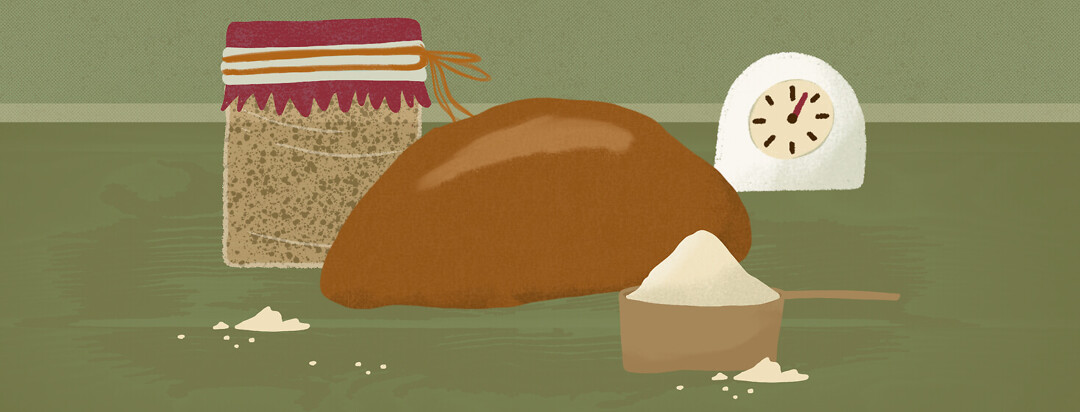The Art of Making Sourdough With Narcolepsy
Have you ever tried making bread from your own homemade sourdough starter?
A sourdough starter utilizes yeasts that work much more slowly than instant yeast. Caring for and maintaining a healthy sourdough starter is an actual art.
Even before I had narcolepsy, making all-natural sourdough bread was difficult for me. Now that I have narcolepsy, I struggle with maintaining my basic needs, such as hygiene. When my symptoms are at their worst, I am unable to care for myself adequately, let alone a sourdough starter!
Tip 1: Find a routine that works for you
Sourdough starters are like plants. They require a certain amount of care every few days in order to thrive. Many different recipes can be found online for “feeding” your sourdough starter, so I will spare you the minute details.
In order to keep my starter effervescent, I try to feed it every 3 days. If I mess up and miss a day, I try not to be hard on myself. Natural yeasts are hardy. When the yeast becomes too hungry, it starts laying down “spores.” These spores will activate when the starter is fed again.
If I neglect my starter, I will take a few days before using it to make bread to give the starter some extra love and attention. This allows the spores to more fully mature into yeast before it is baked into bread. I’ve found that the best way to make flatbread is by using flat starter. If my starter isn’t well-cared for, it won’t be able to work well for me. Simple as that.
Tip 2: Find ways to cut corners
Sourdough starters aren’t as difficult to take care of as they might seem. There are ways to make the process easier for me. Some starter care routines are more intense than others. I’ve found that a hands-off approach works better for me.
When feeding my starter, I usually eyeball my measurements rather than carefully leveling everything out. This doesn’t hurt my starter too much. On the other hand, when I bake bread, I make sure to measure everything carefully. No one likes dry bread, least of all the person who has spent hours preparing the loaves!
Tip 3: Schedule naps during waiting periods
As mentioned before, homemade sourdough starter works verrryyyy sloowwwly. A lot of sourdough-making is defined by waiting in between steps. For example, the starter must be fed the day before making bread and set out to “activate” for 12 hours.
Then, once worked into the bread, the bread must rest for a number of hours. After this initial rest, it will then require a final shaping and another rest before entering the oven.
These long waiting periods are beneficial to me because I use them to take my frequently scheduled naps. My naps prevent sleep attacks during activities that I can’t afford to fall asleep during, such as the actual baking part. I’ve written an article on having to stop baking for a while due to the severity of my narcolepsy. I’ve burned many cookies and granola bars due to sleep attacks.
Do you have any tips for others struggling to cook or bake with narcolepsy?

Join the conversation